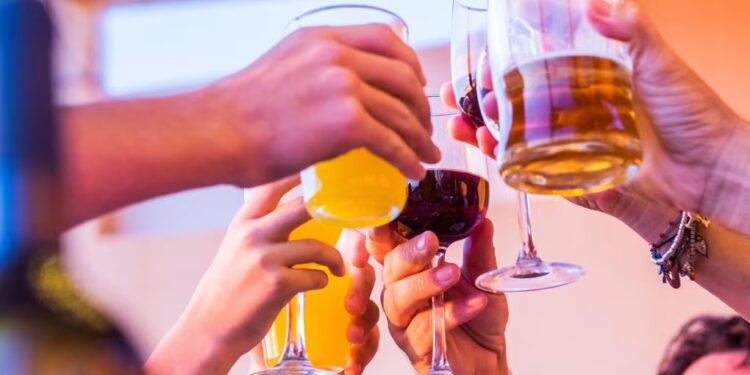If doing a full dry January is too much of a challenge, here are some other ways of keeping the alcohol to a minimum this month
The Doctors’ Sauvignon Blanc, Marlborough, New Zealand 2022 (£9.99. Waitrose) If, as part of your campaign to get people to drink a bit more thoughtfully or just a bit less, you were looking for an attractive name for a period of semi-abstinence, you might well hope to come up with something a little more appetising than “Damp January”. But that does appear to be the name that those of us who are looking for a bit of post-Christmas lifestyle change, but who are unwilling, at this dank and dark time of year, to go the full Dry, are stuck with. (We should, I suppose, count our blessings that we’re not talking about Moist January, which would be enough to get anybody back on the sauce.) Name aside, Damp January, with its modest, easily achievable promise of reducing rather than eliminating our alcohol intake, does strike me as a perfectly sensible way to get through this part of the year, with a wine such as The Doctors’ Sauvignon Blanc, a classically punchy, verdantly vibrant, off-dry NZ sauvignon with an unusually low 9.5% abv, one way of going about that.
Famille Perrin Côtes du Rhône Réserve Rouge, France 2021 (£8.50. 37.5cl, thelittlefinewinecompany.co.uk) Another way to drink less – and I realise this is not the most original of life hacks – is to buy, serve or open smaller amounts, avoiding the temptation that comes with having a full 75cl bottle open on the table. My favourite way of getting around this is to use a carafe or pichet: decanting wine from a full bottle into a 25cl vessel if I’m on my own; 50cl for two. It makes an ordinary dinner at home feel like a holiday night in a French bistro, and is certainly more chic than buying a single-serve can (although, as I’ve written before in this space, the quality of canned wines, such as the bold, bright Canned Wine Company No.5 Old Vine Garnacha, Spain 2020; £2.99, 25cl, houseoftownend.co.uk, is higher than it’s ever been). I’m also quite fond of half-bottles, and specialist thelittlefinewinecompany.co.uk has an excellent range. They’re not the most economical way of buying wine, however: a 75cl bottle of the consistently excellent Perrin family’s house Côte du Rhône is £13 at ocado.com, for example, while two 37.5cls add up to £17.
Angostura Orange Bitters (from £6.50,10cl, amathusdrinks.com; Waitrose) Post-Brexit changes in regulations for wine-bottle sizes that have just come into force mean we could soon see wines in pint-sized bottles, while wine cans can now be 20cl and sparkling wines are permitted as 50cl. As far as I can gather, there’s not much appetite among wine producers for the pint (an unnecessary and expensive addition to any bottling line), but I do agree with English wine producer Rathfinny’s assertion that 50cl is actually a good size for sparkling wine, as it’s pretty much ideal for two (and not just during Damp moments). The 50cl is also a popular size for sweet and fortified wines, with the latter being among the best candidates for another essential element of any alcohol-reduction plan: dilution. White port (such as Cockburn’s Fine White Port, Douro, Portugal NV; £14, 75cl, Tesco) and tonic, a drink long enjoyed by port producers, is a refreshingly light alternative to a G&T, for example. But for me, the best drink for delivering high volume of flavour for low volume of alcohol is to add six or seven dashes of Angostura’s zesty-tangy bitters to a glass of cold tonic water and a slice of orange.
Source: The Guardian




Recent Comments